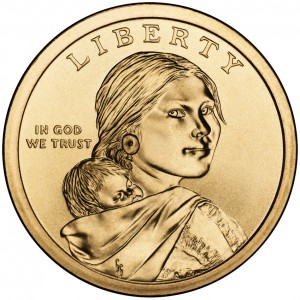The 2016 Native American $1 Coins will mark the eighth and final strike in a series of Congressionally mandated coins with new annual reverse designs emblematic of the contributions of Native Americans to the history of the United States.
This series debuted in 2009 but continued the Sacagawea $1 Coins which had themselves started in 2000. Congress authorized the new annual reverse designs with the passage of the Native American $1 Coin Act which became Public Law 110-82 and dictated that these coins be issued until the completion of another series of strikes – the Presidential $1 Coins. After that series ends, these Native American coins will continue, but with a theme decided upon by the Secretary of the Treasury after consultation with several groups.
The theme of the reverse of the 2009-2016 Native American coins is to include "images celebrating the important contributions made by Indian tribes and individual Native Americans to the development of the United States and the history of the United States," according to the authorizing act.
Accordingly, the Mint started off 2009 with a strike emblematic of the Three Sisters method of planting discovered by Native Americans around 1000 A.D. It was followed in 2010 with a strike showcasing the Iroquois Confederacy established by five tribes in the early 1400’s. In 2011, the reverse design showcased the treaties established between Native Americans and the European Settlers as they first arrived in the new world, circa 1600’s.
This series continues, offering new reverse designs in as close to chronological order as possible to the events depicted.
Sacagawea, the Shoshone woman who accompanied the Lewis and Clark Expedition in the 1800’s is featured on the obverse of all of these coins, just like she was featured in the 2000-2008 series. The portrait was originally completed by Glenna Goodacre and shows Sacagawea’s infant son strapped to her back.
The reverse contains the design emblematic of the contributions made by Native Americans to the history and development of the United States.

